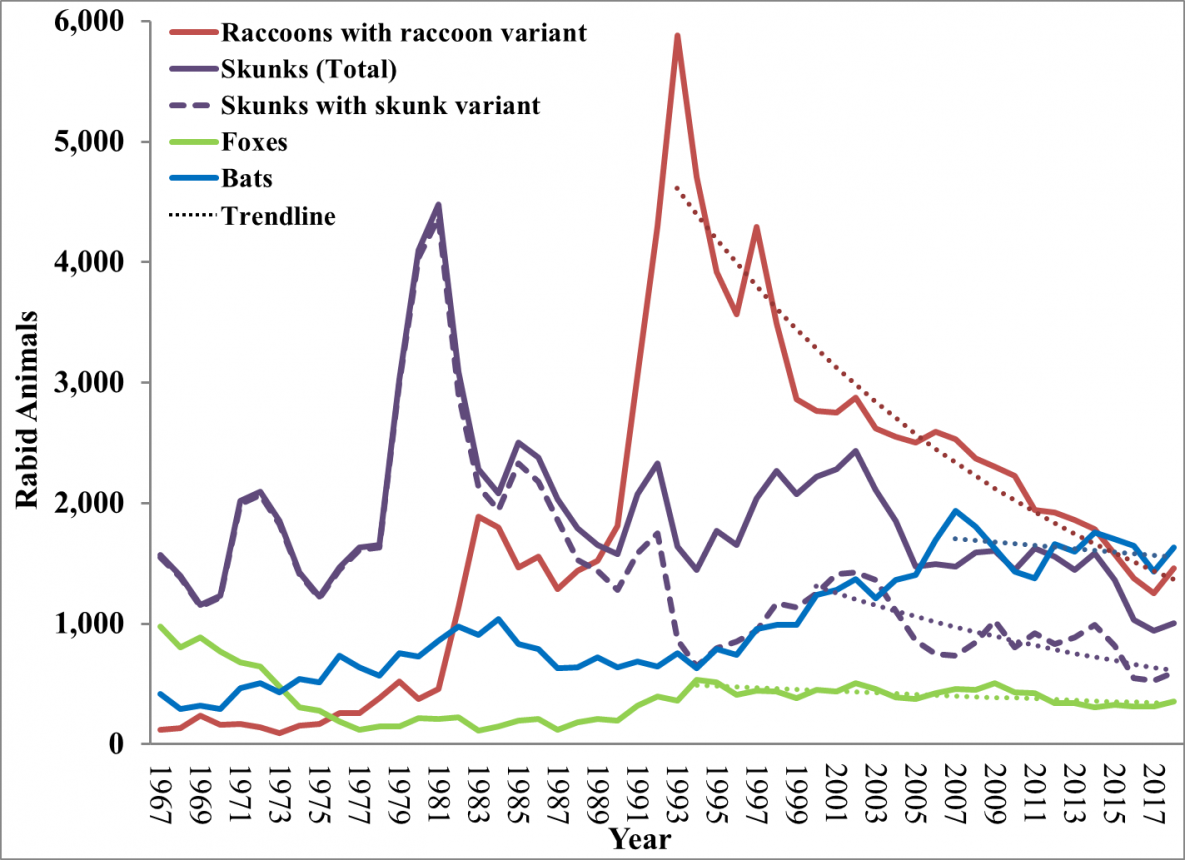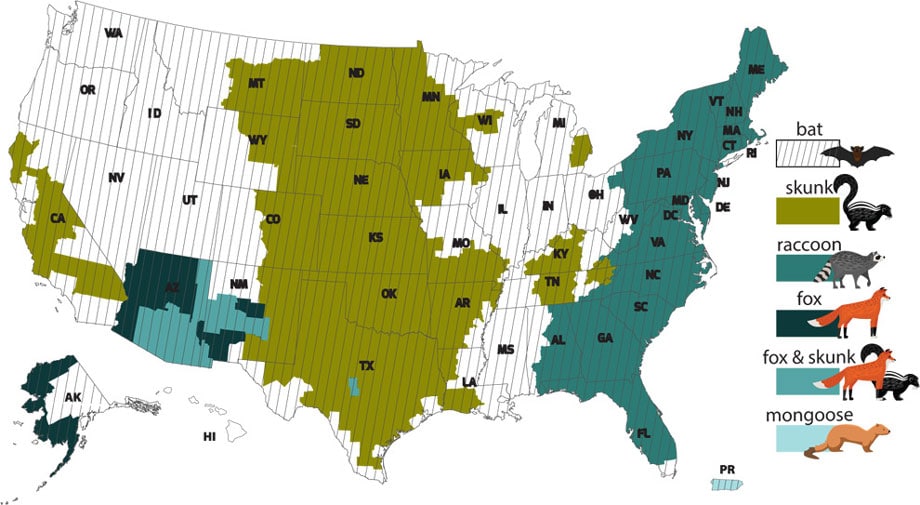Wild Animals
Wild animals accounted for 92.7% of reported cases of rabies in 2018. Bats were the most frequently reported rabid wildlife species (33% of all animal cases during 2018), followed by raccoons (30.3%), skunks (20.3%), and foxes (7.2%).
For complete data, see “Rabies surveillance in the United States during 2018”external icon

Rabies virus is adapted to its reservoir host and different variants exists in the United States, such as racoon variant, bat variant, fox variant, and skunk variant. Although cross-species transmission of rabies virus variants does occur (for example, infection of dogs with raccoon rabies variant), rabies virus variants are primarily transmitted within the species they are adapted to, such as the raccoon variant primarily being transmitted between raccoons. Rabies virus variants associated with the major mesocarnivore species (such as raccoons, skunks, foxes, and mongooses) are distributed in distinct geographic regions.

Between 2013-2017, bats with rabies were found in every state except for Hawaii. Skunks with rabies have been found in parts of California, the Midwest, Texas, Kentucky, Virginia, North Carolina, and Tennessee. Raccoons with rabies have been found in the South and Eastern states. Foxes with rabies have been found in Alaska, Arizona, and New Mexico. Foxes and skunks with rabies have been found in Arizona, New Mexico, and Texas. Mongoose with rabies have been found in Puerto Rico.

